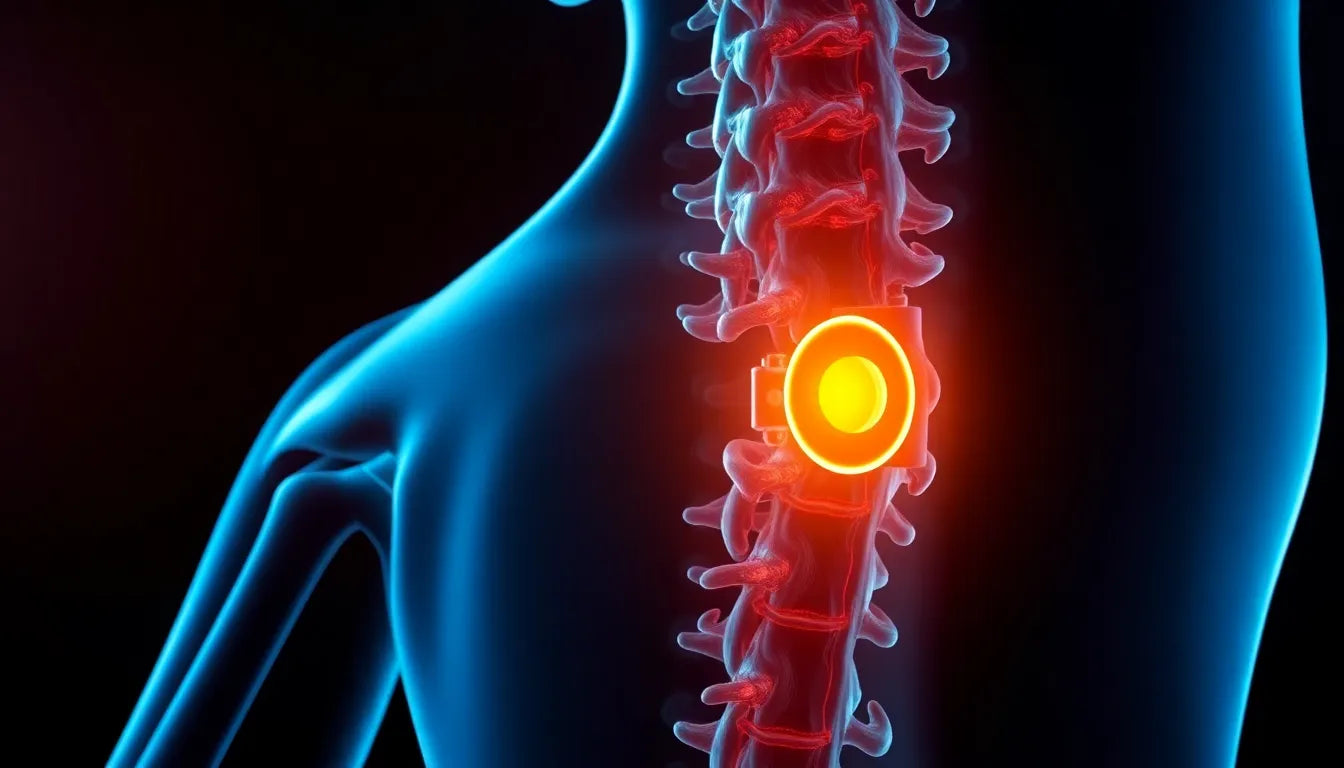A herniated disc in the lower back can be a debilitating condition that significantly impacts daily life and work performance. This common spinal issue occurs when the soft inner core of a spinal disc protrudes through a tear in the tougher outer layer. The lower back, or lumbar region, is particularly susceptible to this condition due to its role in supporting much of the body's weight and facilitating movement. Symptoms often include sharp pain, numbness, and weakness in the affected area, which can radiate down the legs, making even simple tasks challenging.
why sick leave is crucial for recovery
For individuals suffering from a herniated disc in the lower back, taking sick leave is often not just a recommendation but a necessity. The pain and mobility issues associated with this condition can make it difficult to perform job duties effectively, especially in roles that require physical exertion or prolonged sitting. Sick leave provides the essential time needed for recovery, helping to prevent further injury and ensuring that the healing process is not rushed. Without adequate rest, the risk of exacerbating the condition increases, potentially leading to chronic pain or the need for surgical intervention.
setting the stage for recovery
Understanding the nuances of sick leave for a herniated disc is crucial for managing expectations and planning a successful return to work. The duration of leave can vary significantly, typically ranging from 4 to 12 weeks, depending on the severity of symptoms and the type of treatment required. Non-surgical cases often require less time off, while surgical interventions may necessitate a longer recovery period. Several factors influence the length of sick leave, including the nature of the individual's job, the type of medical treatment received, and personal health factors such as age and previous back issues.
This blog post will delve into these aspects, offering insights into typical sick leave durations, the role of medical and workplace interventions, and strategies for a smooth transition back to work. By understanding these elements, individuals can better navigate their recovery journey and make informed decisions about their health and employment. Stay tuned as we explore these topics further, providing practical advice and guidance for managing a herniated disc in the lower back.
understanding the duration of sick leave for herniated discs
The duration of sick leave for those suffering from a herniated disc in the lower back can vary significantly, primarily based on whether the treatment is surgical or non-surgical. For non-surgical cases, where conservative treatments such as physical therapy and medication are employed, the typical sick leave ranges from 4 to 6 weeks. However, the severity of symptoms and individual response to treatment can extend this period. In contrast, surgical cases usually require a longer recovery time, with sick leave extending from 8 to 12 weeks, depending on the invasiveness of the procedure and post-surgical recovery rates.
| Estimated Sick Leave Durations for Herniated Disc Cases | |
|---|---|
| Non-surgical | 4-6 weeks |
| Surgical | 8-12 weeks |
factors influencing the length of sick leave
Several factors can influence the length of sick leave required for recovery from a herniated disc. The severity of the condition and the associated symptoms play a critical role. More intense pain and significant mobility issues typically necessitate a longer recovery period. Additionally, the type of treatment received is a significant determinant; surgical interventions generally require more time off work compared to conservative treatments.
The nature of an individual's job is another crucial factor. Those engaged in physically demanding roles may need extended leave to ensure they do not exacerbate their condition upon returning. Conversely, individuals with sedentary jobs might be able to return to work sooner, especially if workplace adjustments are made, such as ergonomic modifications or flexible working hours.
Individual health factors, such as previous back issues, overall health, and age, can also extend or shorten the duration of sick leave. Older individuals or those with pre-existing health conditions might find recovery takes longer, necessitating additional time off work.
the role of medical consultation in managing sick leave
Medical consultation is vital in determining the appropriate length of sick leave for individuals with a herniated disc. Healthcare providers can offer personalized advice based on the severity of the condition, treatment type, and the individual's overall health. Regular follow-ups with medical professionals are essential to monitor recovery progress and adjust the duration of sick leave as needed. These consultations ensure that the individual receives the necessary support and guidance to facilitate effective healing and prevent further complications.
Medical professionals may also recommend specific interventions, such as physical therapy or pain management strategies, to aid recovery. By adhering to medical advice and attending regular follow-ups, individuals can optimize their recovery process and make informed decisions about their return to work.
In conclusion, understanding the typical duration of sick leave and the factors influencing its length is crucial for individuals with a herniated disc in the lower back. By consulting with healthcare professionals and considering the nature of their job and personal health factors, individuals can better navigate their recovery journey and plan a successful return to work. Stay tuned for the next part of this blog post, where we will explore workplace accommodations, return-to-work strategies, and long-term prognosis for those affected by a herniated disc.
Workplace accommodations and return-to-work strategies
Returning to work after a herniated disc can be challenging, but with the right workplace accommodations, it can be a smooth transition. Employers and employees should collaborate to implement ergonomic adjustments and modified duties that facilitate a gradual return to work. These adjustments not only support the employee's recovery but also help maintain productivity.
- Ergonomic chairs and desks: Investing in ergonomic furniture can significantly reduce strain on the lower back, promoting a more comfortable and supportive work environment.
- Flexible work hours: Allowing employees to adjust their work schedules can accommodate their recovery needs, helping them manage pain and fatigue effectively.
- Gradual return-to-work programs: Implementing phased return-to-work plans can help employees ease back into their roles without overwhelming their physical capabilities.
These strategies not only facilitate an earlier return to work but also reduce the risk of re-injury, ensuring long-term health and productivity.
Prognosis and long-term outlook
The prognosis for individuals with a herniated disc in the lower back varies based on several factors, including the severity of the condition and the effectiveness of the treatment. While many individuals recover fully, some may experience ongoing symptoms that require long-term management. Risk factors for prolonged sick leave include a history of back pain and psychosocial factors such as stress or lack of support at work.
Addressing these factors is crucial for improving long-term outcomes and reducing the likelihood of recurrence. Employers can play a significant role by fostering a supportive work environment and offering resources such as counseling or stress management programs. By taking a proactive approach, individuals and employers can work together to ensure a successful recovery and prevent future issues.
Frequently Asked Questions
How long should I expect to be on sick leave for a herniated disc?
Typical sick leave durations for a herniated disc range from 4 to 12 weeks, depending on the severity of the condition and the type of treatment received.
Can I work with a herniated disc?
Whether you can work with a herniated disc depends on the severity of your symptoms and the nature of your job. It is essential to consult with your healthcare provider for personalized advice.
What workplace adjustments can help me return to work sooner?
Ergonomic modifications, flexible work hours, and gradual return-to-work programs are effective adjustments that can facilitate an earlier return to work.
Will I fully recover from a herniated disc?
Many individuals recover fully from a herniated disc with appropriate treatment. However, some may experience ongoing symptoms that require long-term management.
What are the risks of returning to work too soon?
Returning to work too early can exacerbate symptoms and prolong recovery, potentially leading to further injury. It is crucial to follow medical advice and ensure you are ready to resume work duties safely.
By understanding the importance of workplace accommodations and addressing long-term risk factors, individuals with a herniated disc can navigate their recovery journey more effectively. Employers and employees should work together to create a supportive environment that promotes healing and prevents future issues. For more guidance and personalized advice, consulting with healthcare professionals is always recommended.
Sources
- Active Posture UK. "Navigating Sick Leave for a Herniated Disc."
- Bloon Paris. "How much time off work for back pain?"
- PubMed. "Risk factors for sickness absence due to low back pain."
- PubMed. "Back pain-related loss of working time post-surgery."
- Journal of Occupational and Environmental Medicine. "Prognosis model for sick leave."
- Instituto Clavel. "Back pain and employee sick leave stats."


















